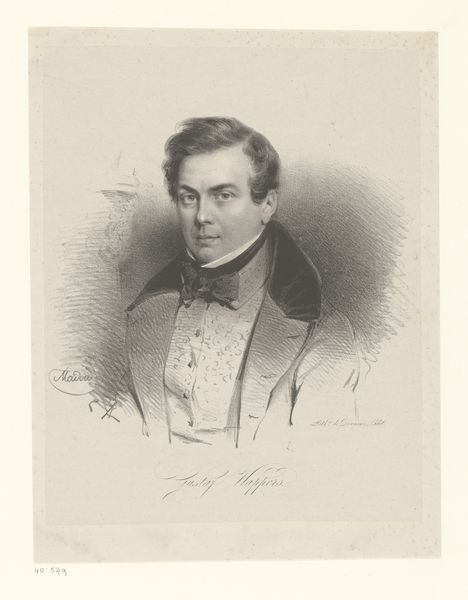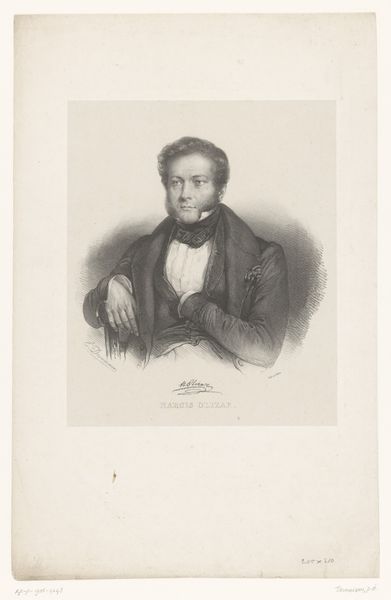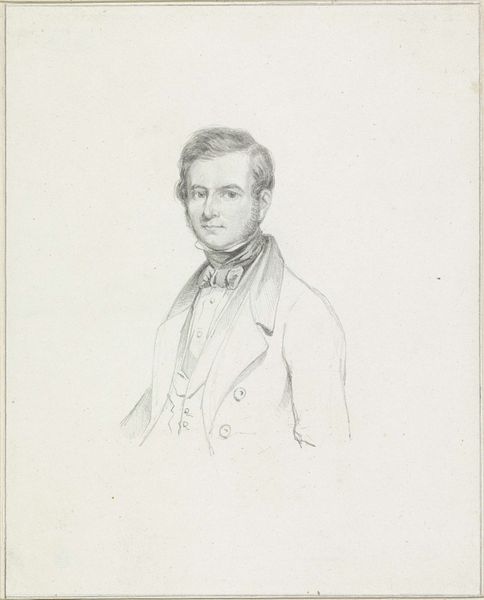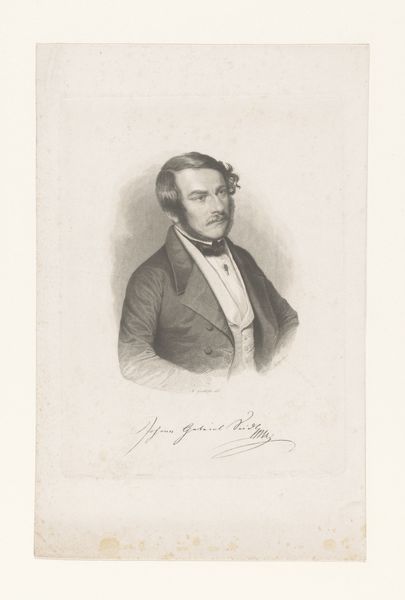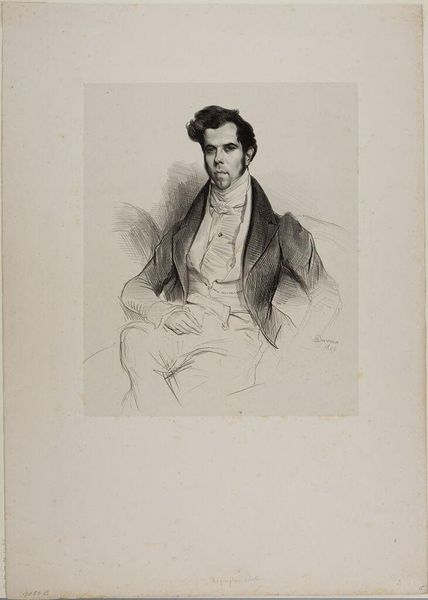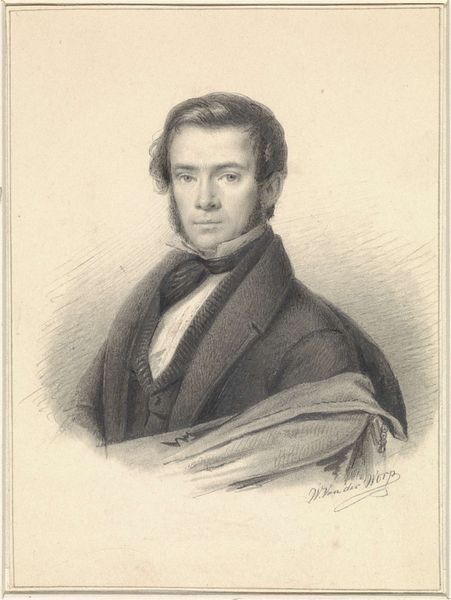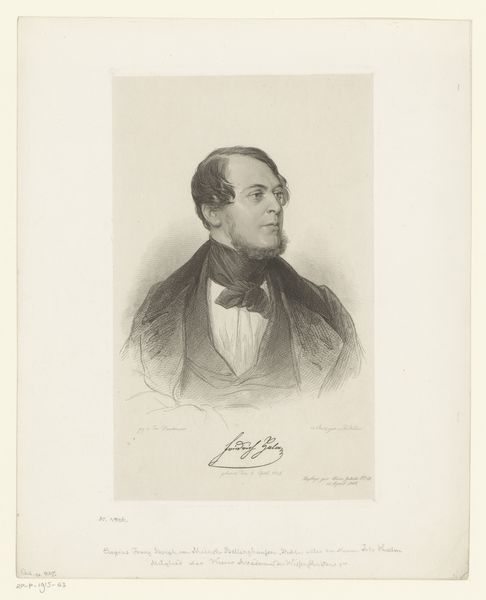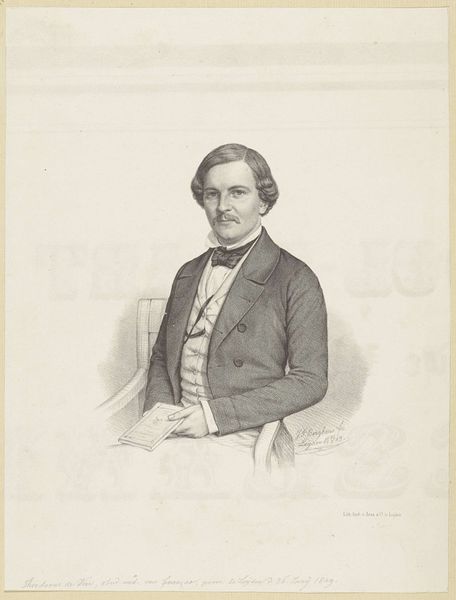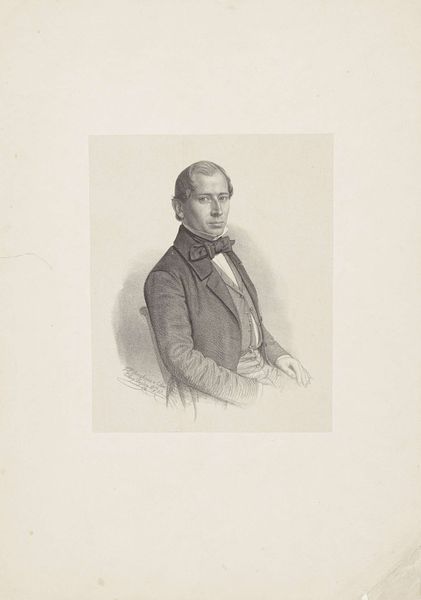
drawing, print, graphite, engraving
#
portrait
#
pencil drawn
#
drawing
# print
#
charcoal drawing
#
pencil drawing
#
graphite
#
portrait drawing
#
engraving
Dimensions: height 355 mm, width 295 mm
Copyright: Rijks Museum: Open Domain
Editor: This is "Portrait of Albert Dommange," created sometime between 1826 and 1839 by J.B. Clermans. It looks like an engraving, maybe with graphite and some other printmaking techniques? It feels very… proper, almost staged, you know? What do you see in this portrait? Curator: Indeed, a very controlled depiction! Notice the subtle use of shading—how it creates a sense of depth, particularly around the subject’s face. Consider the gaze, direct yet also conveying a hint of vulnerability. And those clothes! Think about the symbolic power invested in portraying status and seriousness of a theater director through detailed depiction of clothes. Does this representation reinforce or subvert prevailing notions? Editor: Hmm, the vulnerability, I missed that at first! I was so caught up with the serious clothes! Now that I notice it, it humanizes him in a way. Almost like he is also playing a part. Is that reading too much into it? Curator: Not at all! Art exists through individual interpretations, just as cultural meaning gets layered on to certain clothes. The symbols exist precisely for the varied associations that they hold for viewers. He could be performing the part of a respectable theater director, adding a performative aspect to the already formal nature of the portrait. What do you think that adds to the reading of the image? Editor: It's like he’s acting a role even for the portrait! I suppose that reflects the role of a theater director too. Thanks, I'll definitely be thinking about performativity when I look at portraits now. Curator: My pleasure! Cultural context adds further richness, always encouraging varied interpretations of symbolism.
Comments
No comments
Be the first to comment and join the conversation on the ultimate creative platform.


